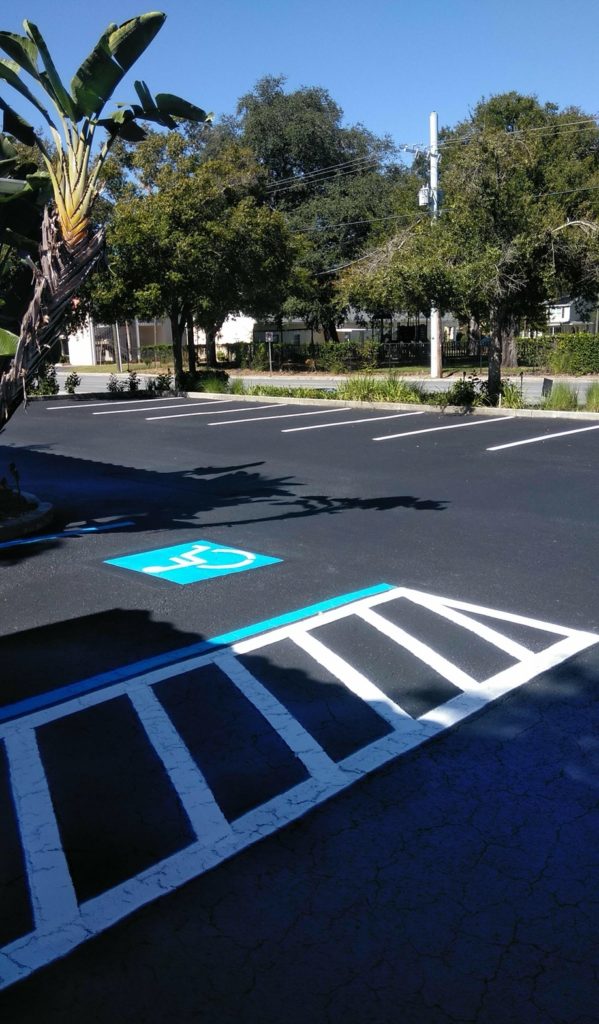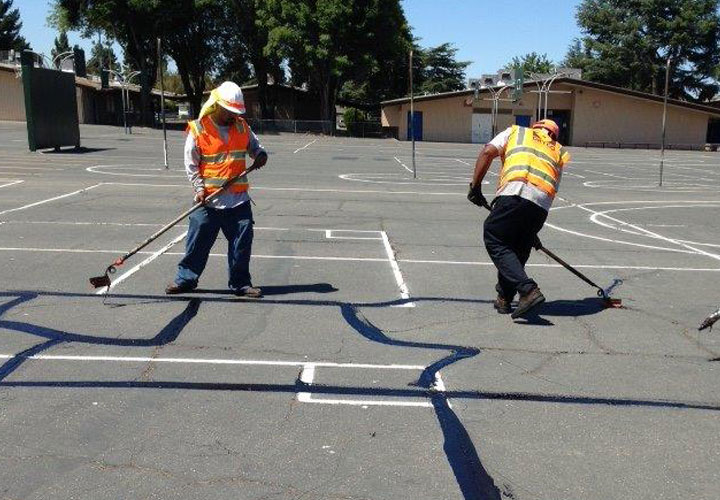Cold Mix Asphalt Vs. Hot Mix Asphalt: Which Is Right for You?

Make-up Differences
Cold mix and warm mix asphalts vary considerably in their make-up, with distinct qualities that influence their efficiency and applications. Cold mix asphalt is created by emulsifying the asphalt binder with water and an emulsifying representative before mixing it with accumulation. This approach enables the asphalt to be workable at lower temperature levels, making it perfect for momentary fixings and for use in colder weather condition problems. Warm mix asphalt, on the various other hand, is made at heats, generally between 300-350 ° F, which assists to achieve better compaction and an extra durable final product. The warm mix asphalt production procedure includes warming the accumulation and asphalt binder separately before combining them at the asphalt plant.
Additionally, cold mix asphalt tends to be less thick and extra adaptable than warm mix asphalt. This adaptability makes it better suited for locations with greater levels of activity, such as driveways or roadways with heavy web traffic. In contrast, hot mix asphalt is known for its high longevity and resistance to rutting and fracturing, making it a recommended option for highways and high-traffic roads where longevity is essential.
Installment Refine Variations
The procedure of installing chilly mix and warm mix asphalt exhibits significant variances in their procedures and demands. In contrast, warm mix asphalt demands a more sophisticated installment procedure. Due to the home heating requirements, hot mix asphalt installments are generally brought out by specialists with customized equipment, guaranteeing a much more irreversible and structurally audio result.
Durability and Durability Aspects
When taking into consideration asphalt choices, resilience and longevity are critical aspects to examine for long-term sidewalk performance. Warm mix asphalt (HMA) is understood for its phenomenal resilience and longevity.
In regards to durability, HMA typically outmatches CMA because of its superior stamina and resistance properties. HMA sidewalks have a longer service life, needing less regular repair work and upkeep, which can translate to set you back financial savings in the long run. Additionally, HMA sidewalks are much more easily personalized to meet details project demands, even more improving their durability.
Expense Factors To Consider
Thinking about the economic implications is a critical aspect when examining the selection between hot mix asphalt (HMA) and cool mix asphalt (CMA) for sidewalk projects. While the preliminary price of warm mix asphalt is usually greater than that of chilly mix asphalt, HMA usually offers a much more cost-effective service in the future as a result of its superior toughness and durability. HMA is known for its capacity to stand up to heavy traffic lots and severe climate conditions, minimizing the need for constant repair services and upkeep. On the other hand, cool mix asphalt is more budget friendly in advance yet may require more frequent patching and resurfacing, leading to higher maintenance prices over time.
Along with material prices, it's important to take into consideration the expenditures connected with setup and maintenance when contrasting HMA and CMA. HMA normally requires customized devices and proficient labor for appropriate installation, which can affect overall task expenses. Conversely, CMA is less complicated to collaborate with and can usually be used using less complex methods, possibly reducing installation costs. Ultimately, the choice between HMA and CMA need to take into consideration not simply the preliminary cost yet likewise the lasting monetary implications to establish the most cost-effective alternative for the particular pavement project.
Environmental Impact Contrast
Contrast of the ecological influences in between warm mix asphalt (HMA) and chilly mix asphalt (CMA) exposes unique differences in sustainability methods. HMA production requires high temperatures, leading to increased power intake and greenhouse gas discharges.
Additionally, making use of CMA commonly includes recycling existing asphalt pavement, advertising source conservation and decreasing the amount of waste sent out to asphalt repair land fills. This recycling aspect further enhances the sustainability of CMA contrasted to HMA. Generally, when taking into consideration the ecological impact, CMA emerges as an extra eco sustainable choice as a result of its reduced energy needs, minimized discharges, and the potential for reusing existing materials. By going with CMA over HMA, roadway building projects can add favorably to environmental preservation initiatives.
Verdict
To conclude, the choice between cool mix asphalt (CMA) and warm mix asphalt use this link (HMA) depends on numerous elements such as composition, installation process, longevity, longevity, cost, and environmental effect. asphalt repair. While CMA provides a cost-effective and quick option for small fixings, HMA ensures exceptional longevity and long life for heavy traffic areas. Take into consideration these factors thoroughly to figure out which kind of asphalt is the appropriate selection for your paving needs

Thinking about the economic implications is a vital facet when assessing the option in between hot mix asphalt (HMA) and chilly mix asphalt (CMA) for sidewalk tasks. While the initial expense of warm mix asphalt is generally higher than that of cool mix asphalt, HMA often offers an extra cost-effective option in the lengthy run due to its superior sturdiness and long life. cold mix asphalt.Contrast of the ecological impacts between warm mix asphalt (HMA) and cold mix asphalt (CMA) exposes distinctive differences in sustainability methods.In verdict, the choice between cool mix asphalt (CMA) and hot mix asphalt (HMA) depends on these details various factors such as composition, setup process, sturdiness, durability, expense, and ecological effect